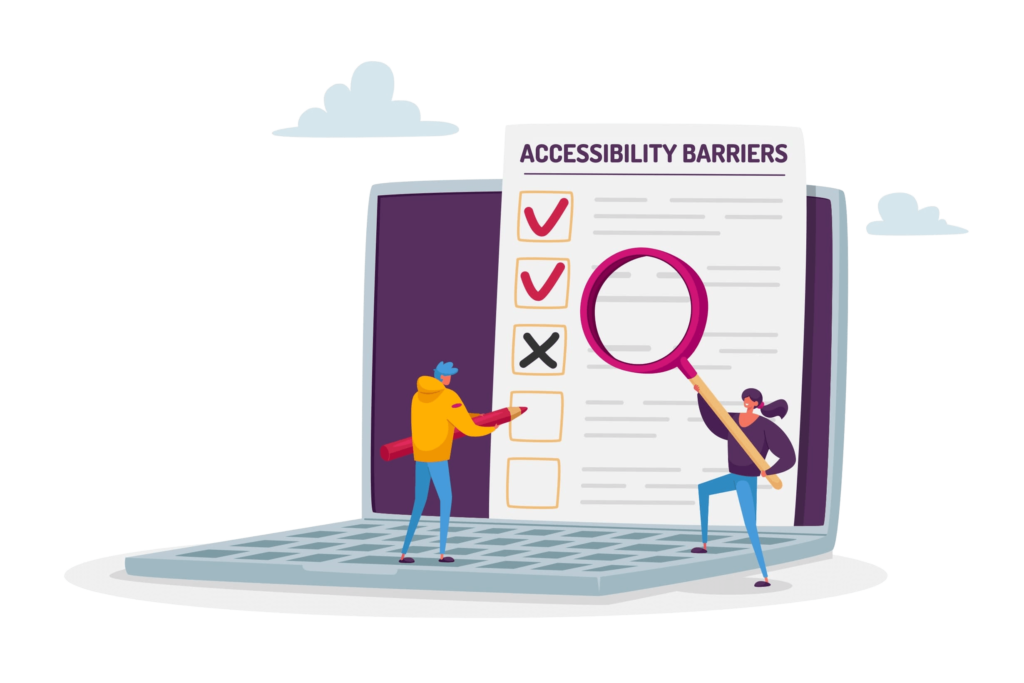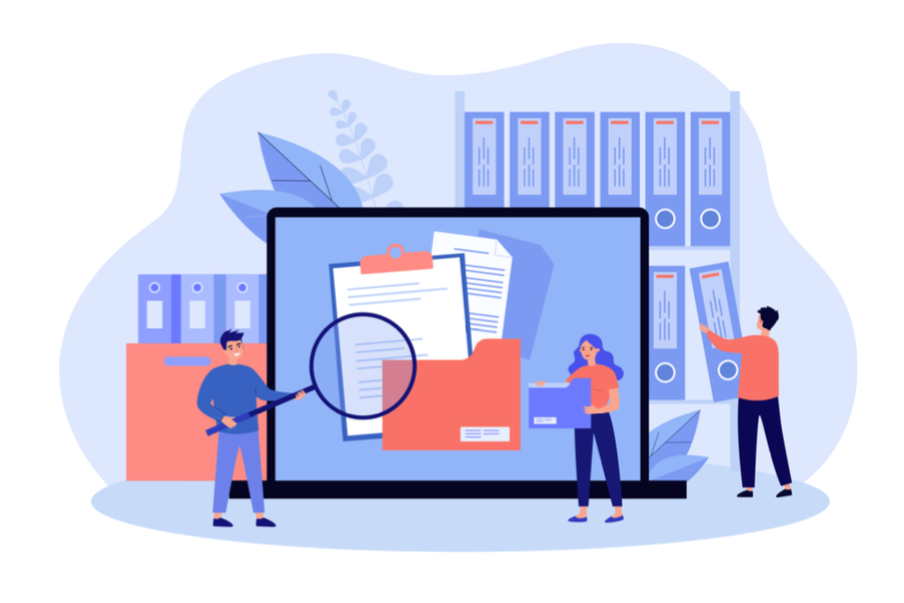
What is Weebly Exactly?
Weebly is a website builder based in San Francisco. The company has already been around for over ten years (since 2006). Unlike other website builders, Weebly has always offered a free plan for its users. The developers are following a different approach compared to their competitors. The main focus has always been on the quality of the platform rather than marketing campaigns. When your website is built on the Weebly platform it is important to make sure it is accessible to all. Web accessibility is the new norm for all websites, let’s dive into the do’s for Weebly websites.
Why is Web Accessibility so Important?
A web-accessible site means that any person, whether with a disability or aging problems, can gain all the information on your website. But also that could benefit everyone. But basically, two main benefits come out of web accessibility.
Making your Weebly Website Accessible to the Broad Public
Whether you own an e-commerce website or a blog, your aim is a larger audience and more visitors. Implementing web accessibility standards to your site will increase your readers and profits. That’s one way to think of web accessibility. But its aim isn’t to bring you more profits. The WCAG (Web Content Accessibility Guidelines) aims to make all the information on the web available with no limits to people, whether they have disabilities or problems.
Avoid Lawsuit
The second reason somewhat forces people to implement web accessibility standards to their websites. Recently, many website owners that lack accessibility has faced legal charges. Any websites that do business in the US are now legally required to offer equal access to all people.
Common Problems with Web Accessibility for Weebly Websites
Have you ever thought about whether people with disabilities have equal access to your website? Unfortunately, they don’t. That’s why we’re here to help you find the causes of that and further implement web accessibility. But before we unfold the best web accessibility solutions, we must understand how the assistive technology of people with disabilities works:
- Visual Impairment
People with visual impairment either use screen readers or require a higher contrast between the text and background color.
- Motor/Mobility
People with physical disabilities use extra tools for typing, on-screen keyboards, and specially designed mouses and keyboards to assist them further. The eye-tracking tools, which are also used in games, are a perfect example of an on-screen keyboard.
- Auditory
When people with hearing impairments may visit your website with text-to-speech software, a great thing to do is include captions for all your videos.
- Seizures
An example of that is photo epileptic seizures. A warning before any flashing effects would be good, but avoiding them, in general, would be better.
- Cognitive
People with cognitive disabilities may use text-to-speech software and spelling & grammar tools. The most popular cognitive disability is dyslexia. Spacing and color customization is a great practice to assist people further.
Solutions to Apply Right Now
As of now, we’ve already mentioned a few solutions for improving your website’s accessibility manually. But without any further ado, let’s dive straight into the improvements you could make today.
Images and Media
It’s a good practice to add alt text to images, but not in all cases. Before you add any alt text to an image, you have to decide whether the image serves any purpose in the context. If the image is for decoration, you’d instead not add any alt text, as you may confuse some of the assisting software programs. But if the image is similar to the nearby content, you’d better add an alt text.
When it comes to videos, a youtube video is a perfect solution. But whether you link to a youtube video or not, captions are a must. Your video is more accessible for people with disabilities and for all people who’d prefer not to turn on their volume with subtitles.
Text, Links, and Pages
When optimizing accessibility, you should make a to-do list and check multiple aspects. The content should be one of them. Adjust font size, color, and background to guarantee higher contrast between the text and keep good spacing in your text. Also, keep in mind that some fonts may worsen your accessibility as they’re not easy to read for everyone.
Available Web Accessibility Tools for Weebly Sites
The web has already grown, achieving over 1.7 billion websites. With so much information around us, there’s an extra tool for everything and any niche. The web accessibility tools can automate the accessibility optimization process and spare you some hard time. It’s high time we step up and optimize all the web pages to be accessible for everyone.
Userway
Userway is one of the best free web accessibility plugins for your Weebly website. The plugin provides significant UX usability improvements and allows the user to adjust color and contrast manually. Also, you can change the fonts, cursor, highlight links, and enlarge the text as much as you want. Remember that any fixed frames on your website may create problems with such UX improvements, so a responsive page should be your priority.
The more critical part of Userway’s web accessibility optimization is the keyboard navigation. The keyboard nav button creates thick red lines that mark the user’s focus on the page. Also, Userway provides support for screen readers. An in-depth Userway review can help you understand all its offerings.
Equalweb
Another web accessibility solution platform is Equalweb. Equalweb also offers a free plan for its users and similar UX improvements. The users can customize the website according to their preferences and needs:
- Change Fonts
- Adjust Font Size
- Adjust Contrast
As we’ve already mentioned, some fonts are hard to read. Even if the UX improvements weren’t there, Equalweb has added a magnifier option to its tools. With this tool, you can zoom wherever you want on the web page. Another great feature is the blinking block, which automatically detects any flashy effects on the page and disables them. The best part is that your users will be able to operate on your website using only voice commands.
AccessiBe
AccessiBe claims to be the #1 automated and AI-powered solution for web accessibility. Their tool doesn’t even require any manual improvements. But unfortunately, there is no free plan. After purchasing, you will receive an accessible and compliant website within 48 hours.
The latest accessibility interface offers six profiles with different accessibility features. Those features provide users with optimal experience based on their disabilities:
- Epilepsy Safe Profile
- Visually Impaired Profile
- Cognitive Disability Profile
- ADHD Friendly Profile
- Blind Users Profile
- Keyboard Navigation Profile
You can achieve all of that with a few simple clicks and patience for up to two days.
Trueaccessibility
Finally, we’d like to feature another automated web accessibility tool with a free plan. Trueaccessibility offers an accessibility menu that can tailor the page according to the user’s needs. This menu provides similar features as the UX improvement we mentioned earlier. This tool brings all the accessibility features to the table, along with a built-in screen reader and keyboard navigation. Of course, users can adjust the contrast, font size, and screen reader through images. In the end, there’s automatic flash detection, which prevents any flashy animations or effects.
To Conclude
Life is undoubtedly not easy for small business owners today. Apart from the struggle to build a business, website, and manage a team, they should also not forget to implement web accessibility. But marketers are used to a dynamic environment, and they don’t fear change.
Implementing web accessibility to your website is a plus-plus situation. Both the end-user and website owner benefit from it. So why hasn’t that been implemented already? We’re here to assist you further into manually and automatically achieving a more fantastic and accessible web.
Many essential solutions can be done manually, such as contrast, font, and font size. But if you want to step up and make your website 100% compliant, you’ll need to sync your manual efforts with an automation tool for web accessibility. Let the plugin take care, scan it through and finish your accessibility improvements manually may be the best practice.












